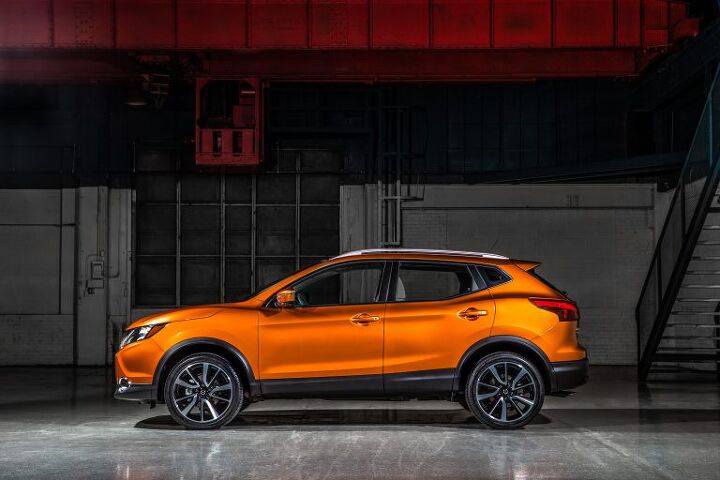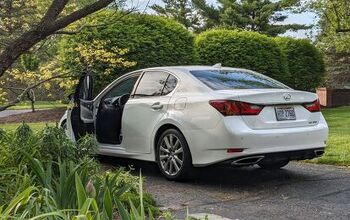NAIAS 2017: Say Hello to Your Next Rental Car, the 2017 Nissan Rogue Sport

You know it. Nissan knows it.
Consumers are fleeing cars in favor of high-riding crossovers. And the Rogue Sport is another one.
Despite the name, Nissan’s newest utility is less Rogue Jr. and more overseas transplant. Nissan America adapted the Qashqai, available in global markets since 2006, with a new name to meet North American tastes (though not in Canada, where it’ll still use its Turkic nomenclature). The renaming ensures we can pronounce it (and Nissan can preserve its Star Wars connection). More importantly, it hitches the new crossover to Nissan’s best selling nameplate.
Rogue sales surged 15 percent to 330,000 units in the U.S. last year, representing nearly one out of four Nissans sold. With the Rogue Sport, Nissan slots a crossover between the successful Rogue and the aging Juke, and connects the new crossover to one of the most successful nameplates in Nissan history.
The 172-inch-long Rogue Sport is within a couple inches in overall length of the new Jeep Compass and Toyota C-HR, and neatly splits the difference between the 185-inch-long Rogue and the 162-inch-long Juke. It also shares more than just a striking visual resemblance to its larger stalemate thanks to a shared platform.
The two-row, five-passenger crossover gets a 141-horsepower 2.0-liter four (as opposed to the 2.5-liter four-cylinder equipped Rogue) mated to a Xtronic CVT transmission. As one might expect, this is a front-wheel-drive vehicle with optional all-wheel drive.
Nissan is going where the consumers are. In this case, that means slicing its crossover offerings thinner than fleet profit margins.
Assembled in Japan, the Rogue Sport will be available in familiar S, SV, and SL trim levels. Pricing has not yet been announced, but the Rogue Sport should arrive at dealers and rental lots this spring.

Twenty year auto industry professional. Currently CEO at Turbo International, the premier American manufacturer of OEM replacement turbochargers for the global aftermarket.
More by Seth Parks
Latest Car Reviews
Read moreLatest Product Reviews
Read moreRecent Comments
- CoastieLenn I would do dirrrrrrty things for a pristine 95-96 Thunderbird SC.
- Whynotaztec Like any other lease offer it makes sense to compare it to a purchase and see where you end up. The math isn’t all that hard and sometimes a lease can make sense, sometimes it can’t. the tough part with EVs now is where is the residual or trade in value going to be in 3 years?
- Rick T. "If your driving conditions include near-freezing temps for a few months of the year, seek out a set of all-seasons. But if sunshine is frequent and the spectre of 60F weather strikes fear into the hearts of your neighbourhood, all-seasons could be a great choice." So all-seasons it is, apparently!
- 1995 SC Should anyone here get a wild hair and buy this I have the 500 dollar tool you need to bleed the rear brakes if you have to crack open the ABS. Given the state you will. I love these cars (obviously) but trust me, as an owner you will be miles ahead to shell out for one that was maintained. But properly sorted these things will devour highway miles and that 4.6 will run forever and should be way less of a diva than my blown 3.8 equipped one. (and forget the NA 3.8...140HP was no match for this car).As an aside, if you drive this you will instantly realize how ergonomically bad modern cars are.These wheels look like the 17's you could get on a Fox Body Cobra R. I've always had it in the back of my mind to get a set in the right bolt pattern so I could upgrade the brakes but I just don't want to mess up the ride. If that was too much to read, from someone intamately familiar with MN-12's, skip this one. The ground effects alone make it worth a pass. They are not esecially easy to work on either.
- Macca This one definitely brings back memories - my dad was a Ford-guy through the '80s and into the '90s, and my family had two MN12 vehicles, a '93 Thunderbird LX (maroon over gray) purchased for my mom around 1995 and an '89 Cougar LS (white over red velour, digital dash) for my brother's second car acquired a year or so later. The Essex V6's 140 hp was wholly inadequate for the ~3,600 lb car, but the look of the T-Bird seemed fairly exotic at the time in a small Midwest town. This was of course pre-modern internet days and we had no idea of the Essex head gasket woes held in store for both cars.The first to grenade was my bro's Cougar, circa 1997. My dad found a crate 3.8L and a local mechanic replaced it - though the new engine never felt quite right (rough idle). I remember expecting something miraculous from the new engine and then realizing that it was substandard even when new. Shortly thereafter my dad replaced the Thunderbird for my mom and took the Cougar for a new highway commute, giving my brother the Thunderbird. Not long after, the T-Bird's 3.8L V6 also suffered from head gasket failure which spelled its demise again under my brother's ownership. The stately Cougar was sold to a family member and it suffered the same head gasket fate with about 60,000 miles on the new engine.Combine this with multiple first-gen Taurus transmission issues and a lemon '86 Aerostar and my dad's brand loyalty came to an end in the late '90s with his purchase of a fourth-gen Maxima. I saw a mid-90s Thunderbird the other day for the first time in ages and it's still a fairly handsome design. Shame the mechanicals were such a letdown.





































Comments
Join the conversation
I think it looks better than its big brother, at least in that burnt orange paint.
They call it "Sport", yet it gets less powerful powerplant. LMAO.